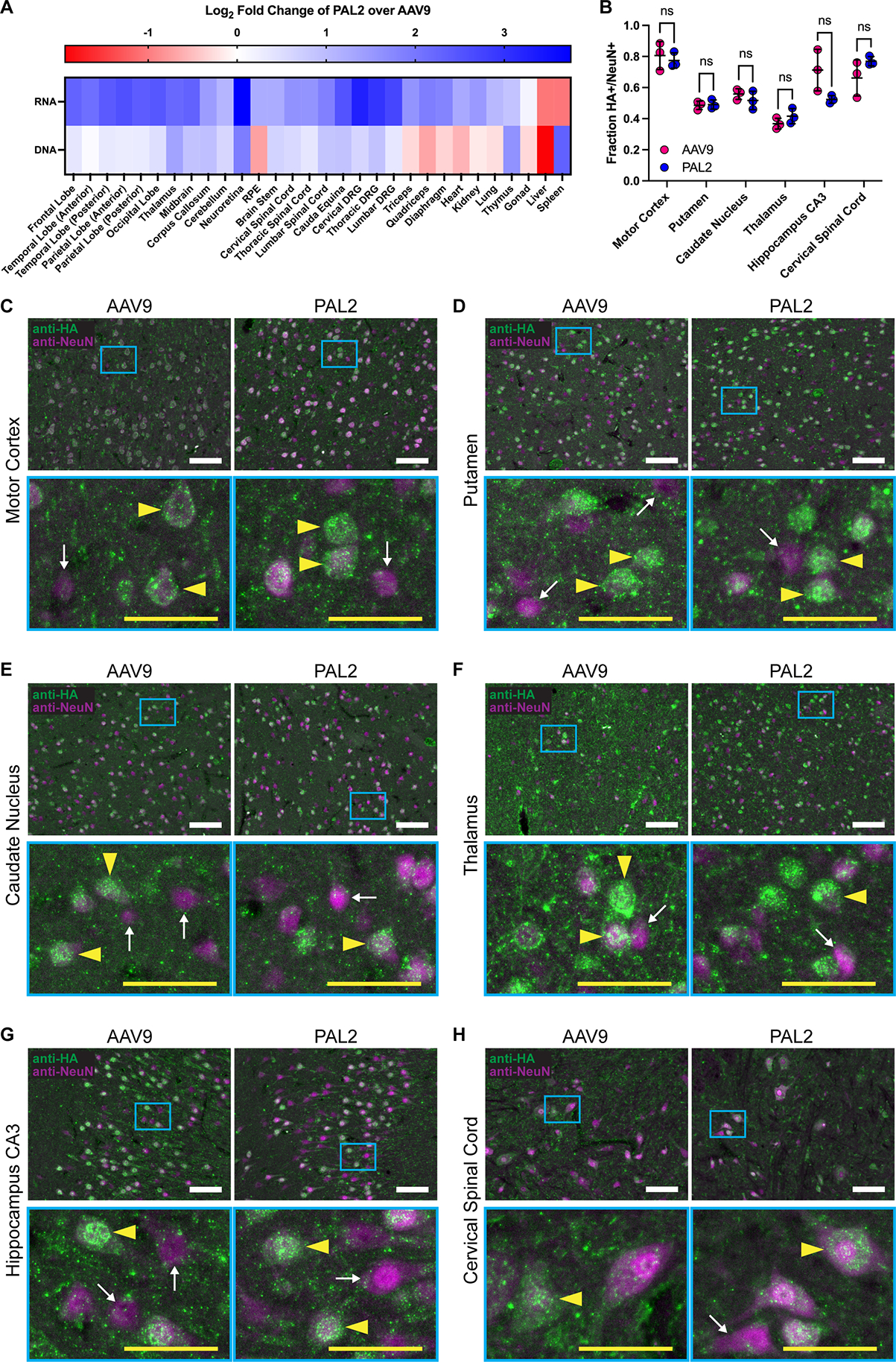Figure 7.

Second-generation capsid variant PAL2 transduces the macaque central nervous system in a head-to-head experiment with AAV9.
(A) Heatmap of PAL2 transgene mRNA expression and vector genome abundance normalized to AAV9 in a single two-year-old female cynomolgus macaque three weeks after injection with 3E+13 vg/kg of each vector. Data are log2-transformed.
(B) Fraction of NeuN+ neurons transduced by AAV9 or PAL2 delivering a CBh-hFXN-HA transgene as measured by immunostaining for the HA tag in conjunction with NeuN. In order to compare the same tag for both vectors, AAV9 and PAL2 data are derived from different two-year-old cynomolgus macaques injected with 3E+13 vg/kg of the vector in question; one male and one female, respectively. Data are represented as mean ± SD for n=3 replicate 12 μm cryosections and individual data points are the aggregate of three non-overlapping images of the same section taken with a 20X objective. Significance is determined by two-tailed Welch’s t-test with Holm-Šídák MCT.
(C-H) Representative images depicting colocalization of hFXN-HA expression with respect to NeuN+ neurons in the macaque (C) motor cortex, (D) putamen, (E) caudate nucleus, (F) thalamus, (G) CA3 region of the hippocampus, and (H) ventral horn of the cervical spinal cord. Magnified frames (cyan) show detailed regions with representative HA+ transduced neurons (yellow arrowheads) and HA- untransduced neurons (white arrows). White scale bars: 100 μm; yellow scale bars: 50 μm.
See also Figures S2–S5 and Tables S2–S3.
